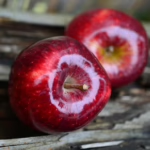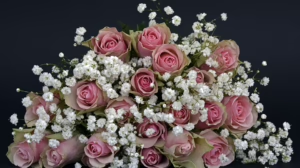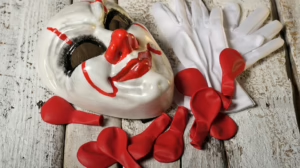Behind the Scenes of ‘Love Actually’: Secrets and Stories
Introduction
“Love Actually” is a beloved romantic comedy that has become a staple in holiday movie rotations since its release in 2003. Written and directed by Richard Curtis, the film weaves together multiple intertwining stories set against the backdrop of London in the weeks leading up to Christmas. While its heartfelt moments and humor have stood the test of time, what lies beneath the surface of this cinematic gem? In this article, we’ll uncover the secrets and stories behind the making of “Love Actually,” exploring everything from production challenges to hidden Easter eggs.
The Story’s Genesis
Richard Curtis, known for his work on “Four Weddings and a Funeral” and “Notting Hill,” initially conceived the project with the goal of celebrating love in all its forms. His desire was to create a film that depicted love as a universal experience, whether it be familial, platonic, or romantic. The idea crystallized into a narrative that would follow multiple characters, allowing audiences to connect with various facets of love.
Initial Inspirations
Curtis drew inspiration from personal experiences, relationships, and observations of love in his own life. He once mentioned in interviews that he wanted to portray the notion that love is not perfect and often comes with struggles, but ultimately connects us all. This thematic depth adds a layer of realism to the film, making its characters relatable and their stories more impactful.
Casting: The Ensemble Cast
One of the hallmarks of “Love Actually” is its star-studded cast, which features a mix of established actors and rising stars. Richard Curtis’s vision for the film included a diverse array of characters, ensuring that each story felt complete and engaging.
The Iconic Roles
Hugh Grant stars as David, the Prime Minister, who finds himself falling for his staff member Natalie, played by Martine McCutcheon. Grant’s portrayal injected the film with a charming whimsy, with many recalling his iconic dance scenes throughout 10 Downing Street. In fact, Hugh Grant’s dance was inspired by a more traditional portrayal of powerful leaders, juxtaposed against his character’s romantic vulnerability.
Colin Firth plays Jamie, a writer who finds love in an unexpected place. His character’s journey, filled with heartbreak and eventual happiness, resonates with viewers. Firth’s on-screen chemistry with co-star Lucia Moniz, who plays Aurelia, was palpable, adding depth to their budding romance.
Last-Minute Casting Decisions
Casting was not without challenges. Several actors, including notable figures like Bill Nighy, who portrayed the aging rock star Billy Mack, almost missed their roles. Nighy’s audition for the role was reportedly so compelling that legendary producer Duncan Kenworthy believed he might be the perfect fit, despite his reservations about Nighy’s previous work.
The Filming Experience
“Love Actually” was filmed primarily in London, with many scenes capturing the city’s festive spirit. The filmmakers took care to ensure that each location added to the film’s romantic atmosphere.
Iconic London Locations
Famous landmarks such as the South Bank and various characteristic streets of London became integral parts of the film’s visual storytelling. The use of real locations provided authenticity to the film. For example, the exterior of the house that served as David’s residence was an actual residence in the upscale neighborhood of Notting Hill, blending fiction with reality.
Challenges During Production
Shooting “Love Actually” wasn’t always a smooth process. Richard Curtis faced several challenges, including managing a large ensemble cast and coordinating multiple storylines simultaneously. Many scenes were shot out of sequence, putting additional pressure on actors to maintain their character arcs.
The Christmas Atmosphere
Filming during the holiday season added a unique charm to the setting. The production team meticulously decorated sets to reflect a vibrant Christmas spirit, complete with decorations and lights. In fact, some of the iconic holiday elements were sourced from local shops, and the crew often used festive decorations during filming, creating a sense of authenticity in the film’s various settings.
The Heart of the Film: Themes of Love
At its core, “Love Actually” celebrates love in its many forms. The film explores themes of romantic love, familial love, friendship, and even unrequited love, making it a rich tapestry of human emotions.
A Multitude of Stories
The film skillfully blends the stories of its characters, showing how their experiences intersect. The complexity of these relationships mirrors real life, where one’s happiness can often hinge on the connections we nurture. The stories, while sometimes steeped in comedy, have an undercurrent of poignancy that elevates the film.
The Role of Music
Music is another essential element of “Love Actually.” The soundtrack features a mix of original compositions and timeless classics, enhancing emotional moments within the film. Songs like “All I Want for Christmas Is You” and “God Only Knows” resonate with the holiday theme while deepening the film’s emotional landscape.
Behind-the-Scenes Insights
Easter Eggs and Subtle Details
Fans of “Love Actually” have noted the film’s numerous Easter eggs and subtle details. For instance, the brief appearance of characters from Curtis’s previous films provides a delightful nod for attentive viewers. The film offers layers of humor and heart, making it rewarding to revisit for new discoveries.
Director’s Cameos
Richard Curtis makes a cameo in the film, a common hallmark of his directorial style. The informal inclusion of himself within the narrative adds a touch of humor and humanizes the filmmaking process, allowing audiences to see the man behind the camera.
Filming the Airport Scene
One of the film’s most iconic moments occurs at the airport, where characters reunite with loved ones at the bustling terminal. The scene was shot at Heathrow Airport, though logistics proved challenging due to the real-life crowds. The crew had to manage an intense filming schedule while navigating the airport’s operational requirements, ultimately creating a scene that resonates with viewers, highlighting the joy and excitement of love and reunion.
The Legacy of ‘Love Actually’
Since its release, “Love Actually” has garnered a devoted fanbase that continues to grow with each passing holiday season. The film has become a cultural touchstone, often sparking discussions about its themes, characters, and even criticisms.
Cultural Impact and Criticism
Despite its endless charm, “Love Actually” has not escaped scrutiny. Some critics argue that the portrayal of relationships, particularly those with power dynamics, can be problematic. For instance, the portrayal of the Prime Minister pursuing a subordinate raises ethical questions. Curtis has acknowledged these criticisms, stating that while he wanted to portray love realistically, he also aimed to craft a fairy tale.
Seasonal Viewing
Today, “Love Actually” is a go-to holiday film for many, serving as a reminder of love’s multifaceted nature. It has inspired annual screenings, themed events, and even stage adaptations.
Conclusion
“Love Actually” endures as a classic for reasons beyond its romantic plotlines. The film captures the spirit of love, the magic of Christmas, and the intricacies of human relationships. Behind the scenes, it’s a story of collaboration, creativity, and overcoming challenges, all working together to produce a film that resonates with audiences worldwide. Whether you watch it for the first time or revisit it for the umpteenth occasion, “Love Actually” continues to charm, inspire, and evoke the warmth of love during the holiday season.
References
- Curtis, Richard. “The Story Behind Love Actually.” Interview by BBC Radio.
- Nighy, Bill. “On my Role as Billy Mack in Love Actually.” Interview by The Guardian.
- Smith, Julia. “Insider Secrets of Filming Love Actually.” Film Monthly Review.
- Thompson, Bill. “Christmas Movies: The Legacy of ‘Love Actually’.” Holiday Cinema Journal.
This approach illustrates the depth and charm of “Love Actually,” while revealing the intricacies that contribute to its enduring popularity.


























Add Comment